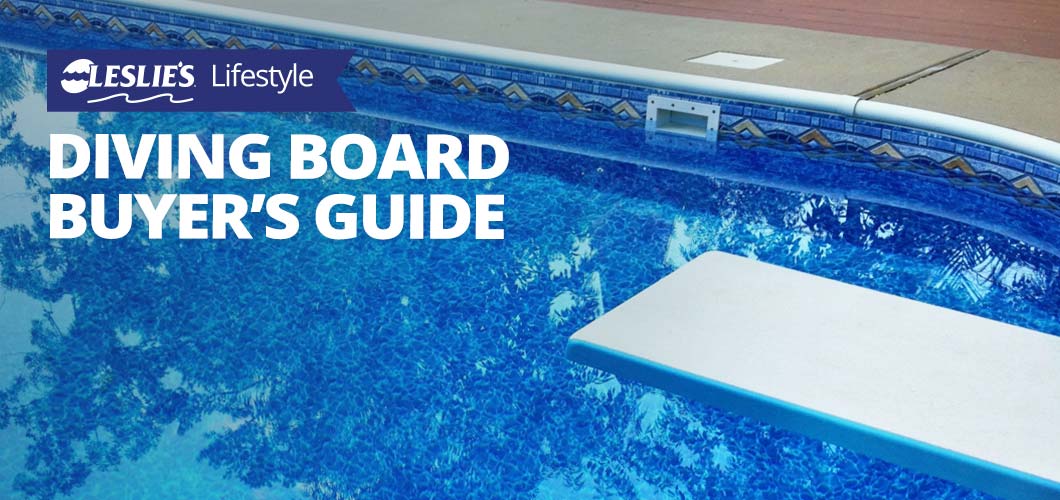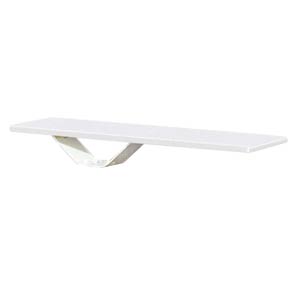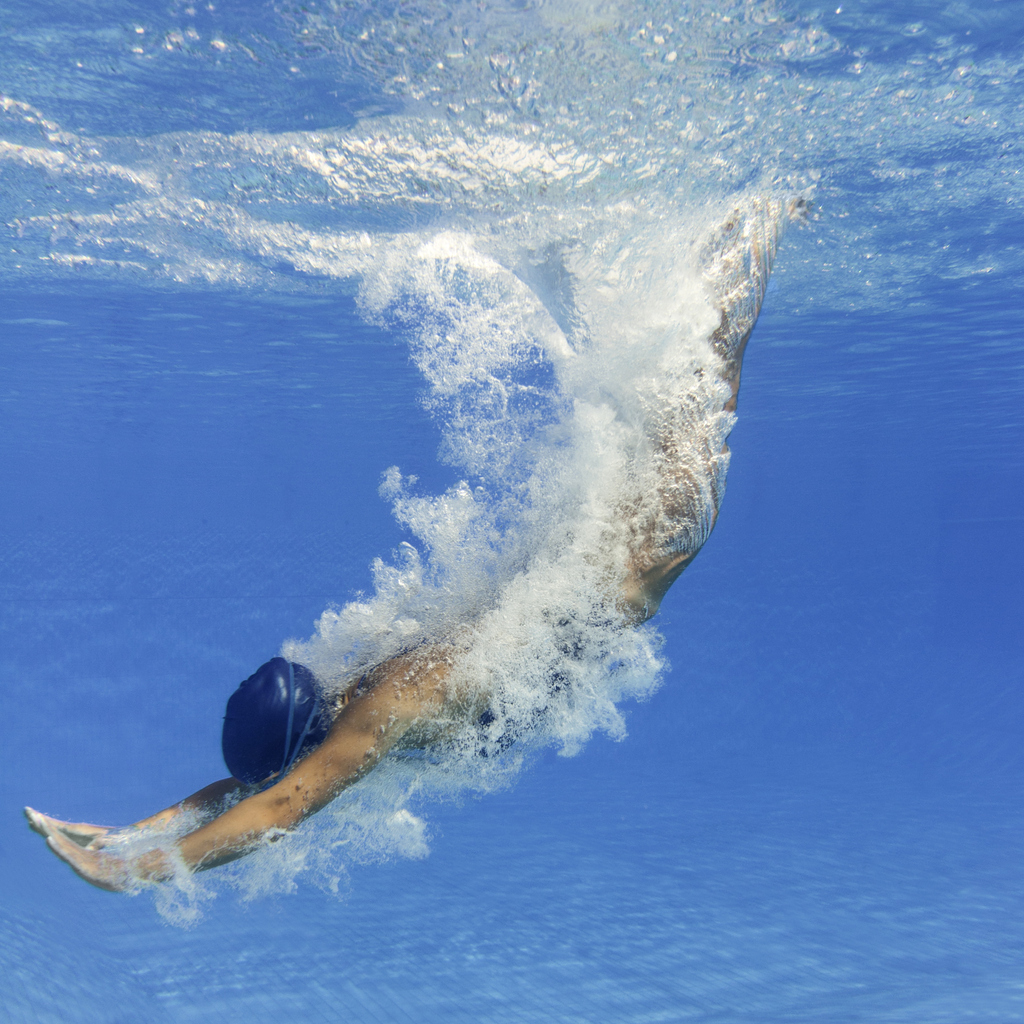
Diving Board Buyer's Guide
Looking forward to summers at the public swimming pool was one of the best parts of growing up. Splashing around with friends, playing games, and best of all, jumping off the diving board and cannonballing into the water made for lots of fun memories. Fast forward to today, and you have a beautiful, glistening pool in your own backyard. Now it’s time to install your very own diving board to heighten the fun you and your family will have during those hot summer days!
At first glance, purchasing a diving board might seem like a simple and straightforward process. But there is more than meets the eye when it comes to selecting a diving board. We’ll cover all the bases in this guide, so you can choose the perfect board for your pool. Let's dive in!
Diving Board Types
The most common styles of diving boards used today are the springboard and platform. While they accomplish the same task — a base for divers to jump off of — they have their own unique features. It's important to know the difference between the two when selecting which one is right for you.
KEEP IN MIND: The type of board — specifically the size and shape — MUST fit the dimensions of your pool. You should plan for who will use the board, whether it be a child, teenager, adult, or all the above. Always do your research before purchasing a diving board!

Springboards
As the word implies, this type of diving board uses a spring mechanism. When you think of a springboard, the first thing that comes to mind is probably the old-school style with coiled springs at the base. While that type of board is still common, modern diving boards have more sleek and elegant designs. Modern boards may have concealed springs, a cantilever function, or some other design that allows for the optimum springing action while diving. This style of diving board may also have a flexible plank that bends with the diver as they jump up and down on it.
What makes springboards so fun is the extra boost they give the diver. When jumping down on the board, the springs load. When pushing off the board, the springs unload and launch the diver high into the air.
While this exhilarating feature is the main appeal of springboards, it's important to understand the risks involved. Because of the extra height in the jump, the pool must be deep enough so that the diver is not at risk of hitting the bottom. Due to the added risk of potential injury, springboards are not as common as their stationary counterpart, the platform.
Platforms
The main difference between a platform diving board and a springboard is that platform boards are stationary. Unlike springboards that help launch divers into the pool, platform boards are simply solid bases used for diving. They are the most common diving boards found in backyard pools these days. The most popular platform board is a rigid plank with a solid base that stretches out over the pool. But you’ll be surprised to know that this is actually only one style of platform. There are many variations of platform diving boards, such as diving rocks.
Diving Board Material Options
Nowadays, there are several ways to customize your diving board. Most bases, whether for a springboard or platform, are made of stainless steel, concrete, or acrylic reinforced with fiberglass. However, there is more variety to choose from when picking material for the board itself.
Springboard Board Types
- Aluminum. Commercial and residential-grade diving boards have been made with aluminum for years due to its lightweight, durable quality.
- Fiberglass. Often used to cover and reinforce wood or acrylic, fiberglass is a strong material that will hold up to years of repeated use.
- Composite. A composite board is made of a mixture of metals or materials, such as laminate or acrylic.
Platform Board Types
Platform diving boards can be made of the same materials as springboards, in addition to the following:
- Wood. Adding an elegant touch to your backyard, wood diving platforms are gaining popularity with pool owners. With their unique look and hardy build, they are a great choice if you're looking for something out of the ordinary.
- Stone. Stone diving platforms are highly sought after, due to their ability to blend into your pool deck. It is common to have your stone diving platform made out of the same material as your pool deck for a smooth, cohesive look.
- Concrete. Offering sturdiness and minimal upkeep, concrete diving platforms are a great, low-maintenance option.
Form to function is an important aspect to keep in mind when choosing a diving board. You want your board to be heavy duty, have a non-slip surface for maximum safety, and an overall design that promises durability. After you’ve covered these bases, you can choose a specific color and design to complement your pool’s aesthetic.
Understanding the "Diving Envelope"

While it might be fun to install a high-dive board like the one found in many community pools, that simply isn’t an option with a backyard pool. The most important factor in deciding which diving board to purchase is calculating the diving envelope. This phrase refers to the safety cushion that a diver has when jumping off a board into the pool.
To get an accurate diving envelope figure, you'll need to measure four specific depths, four specific widths, and the distance between certain areas in your pool. All that measuring can get a bit complicated, so we recommend speaking with a pool professional or a diving board contractor who can give you an accurate figure.
While you might be tempted to just eyeball your measurements, it is crucial that you take this part seriously. Making an inaccurate guess and installing the wrong diving board could cause someone to get injured. Say for example, you have a small, shallow pool that gradually gets deep. That might seem like the ideal pool for a diving board. But the diver would only be safe if they jumped straight down into the deep end. If they jumped forward off of the board, they would hit the shallow end. A rule of thumb is, the longer and deeper your pool is, the safer it is for diving.
If your pool can safely accommodate a diving board, installing one is guaranteed to bring summertime fun to a whole new level. If you’re unsure which board is right for your pool, call or stop by your local Leslie's to speak with one of our certified pool experts. You can also browse our entire catalog of diving board kits and components online. Once you select the right diving board, you'll hear the words “CANNONBALL!” all summer long!